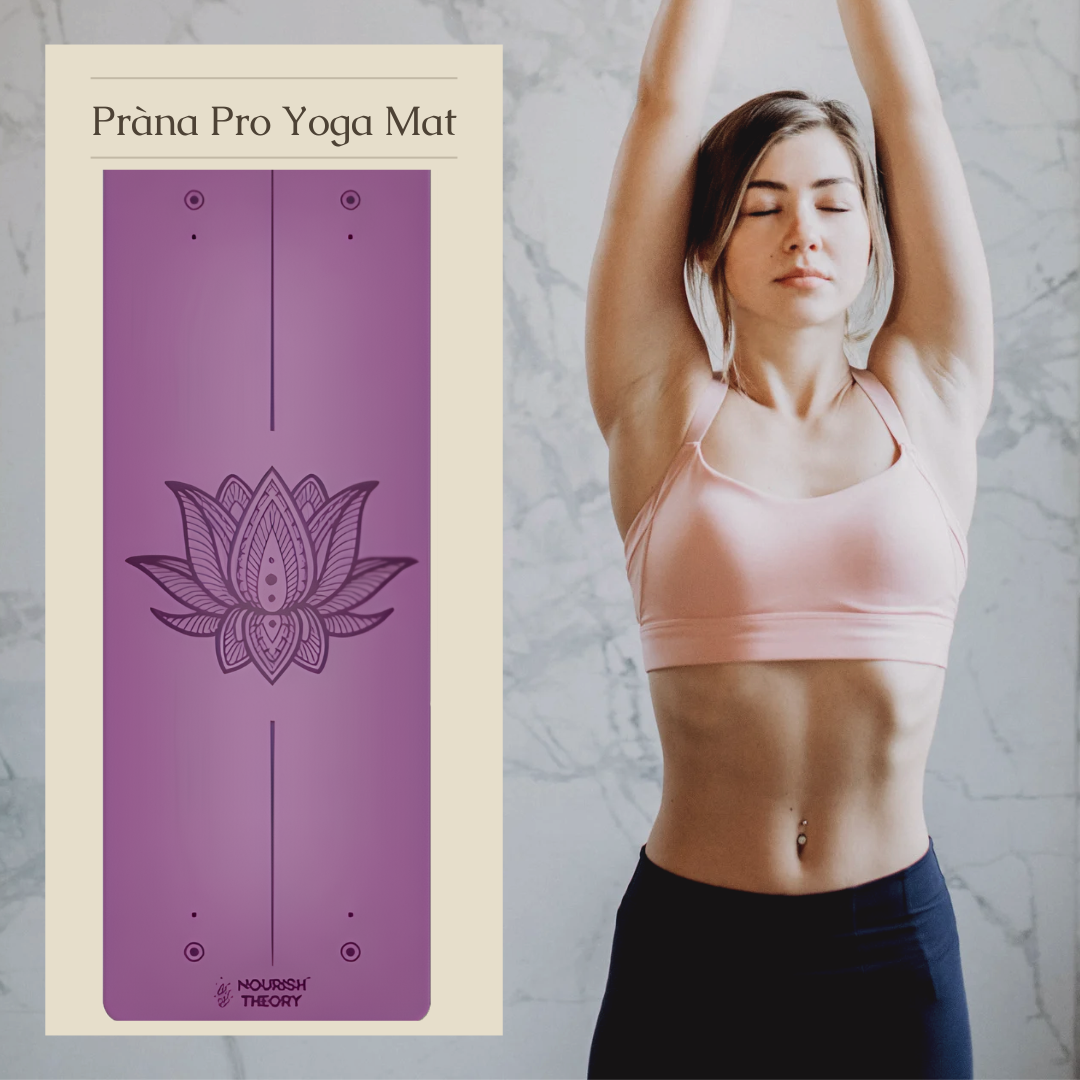
Which yoga mat is best? How to choose the right yoga mat and accessories - good for health and the environment.
Share
The Truth About Yoga Mat Materials: Separating Fact from Fiction
As yogis, we strive for harmony with nature and our inner selves. But have you ever stopped to think about the materials used in your yoga mat? The truth is, many mass-produced yoga mats are made from toxic materials that can harm your health and the environment. In this article, we'll delve into the common materials used in yoga mats, their potential health and environmental impacts, and explore safer, eco-friendly alternatives.
PVC: The Toxic Truth
Polyvinyl Chloride (PVC) is a common material used in cheap yoga mats. However, it contains phthalates, which have been linked to endocrine disruption, reproductive issues, and cancer. PVC may also contain Bisphenol-A (BPA), a known endocrine disruptor. Moreover, toxic metals like lead and cadmium are used as stabilizers in PVC production. The environmental impact of PVC is equally concerning, with dioxins and mercury released during production and disposal.
TPE: The Uncertain Alternative
Thermoplastic Elastomer (TPE) is a plastic material that's often marketed as eco-friendly. However, its composition is not specified, making it difficult to determine its safety and environmental impact. TPE may contain phthalates, which pose health risks. While considered safe, TPE is not biodegradable and its sustainability is questionable.
PU: The Safer Option
Polyurethane (PU) is a resilient and flexible material that's gaining popularity in yoga mats. It's affordable, safe, and sustainable. PU can be recycled and reused, reducing waste and energy consumption. Unlike PVC and TPE, PU is non-toxic and has a minimal environmental impact.
Conclusion
When it comes to your yoga mat, it's essential to prioritize your health and the environment. Opt for PU yoga mats or explore other eco-friendly yoga mats and accessories. Remember, a non-toxic yoga mat may cost more, but the benefits to your well-being and the planet are priceless. Make the switch today and embark on a more sustainable yoga journey.
References
[1] https://europlas.com.vn/en-US/blog-1/is-polyurethane-plastic-toxic
[2] https://www.ncbi.nlm.nih.gov/pmc/articles/PMC2706654/
[3] https://www.ncbi.nlm.nih.gov/pubmed/30336412
[4] https://theroundup.org/is-tpe-eco-friendly/
[5] https://plasticseurope.org/plastics-explained/a-large-family/polyurethane/
[6] https://blog.synthesia.com/en/reasons-why-polyurethane-is-recyclable-and-sustainable#
